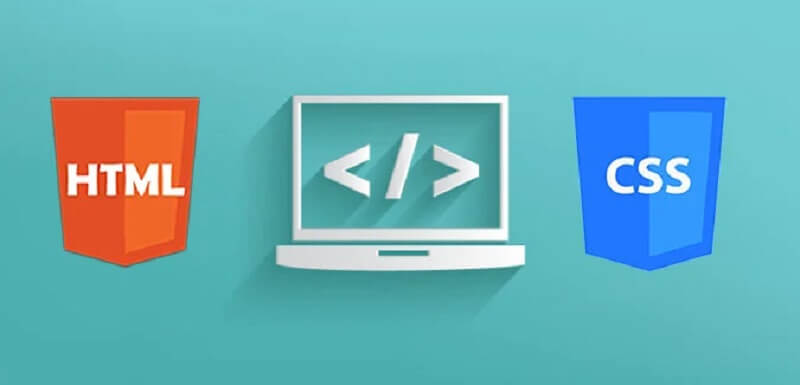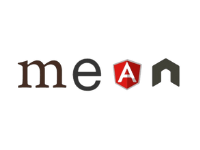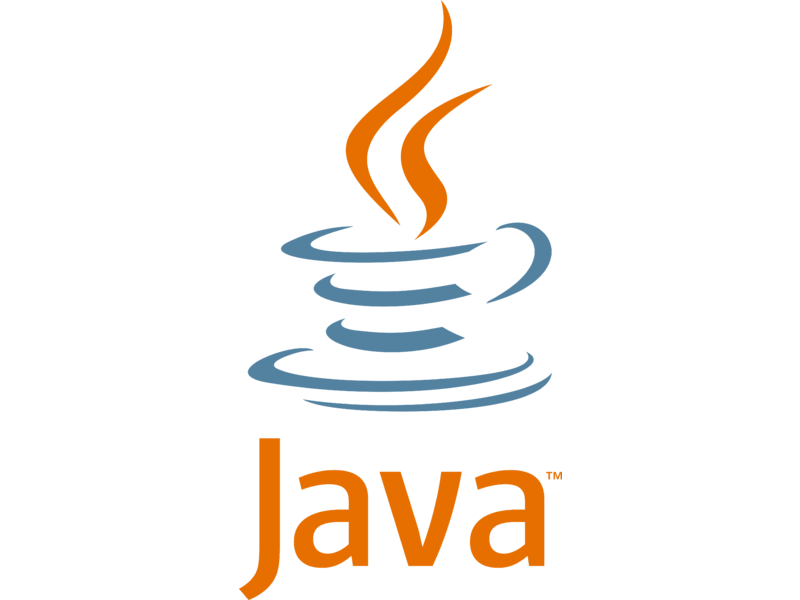You are likely to get confused with so many Full Stack languages around if you are trying to determine where to begin. Each programming language has its own capabilities and advantages that make it popular. For a successful Full Stack development career, you must know multiple programming languages to be able to deal with both client and server-side web app development. So, let’s talk about the Top Languages For Full Stack Developers in 2023.
When you are thrown at too many options, confusion and doubts are obvious. To help you with the confusion about programming languages, for pursuing a successful career, we have compiled a list of top programming languages for Full Stack Developers in 2023.
1. HTML and CSS
HTML is used to create web pages that contain text, images, audio, and other elements. It is the primary language for web page creation. Using HTML to write the web page enables the browser to easily interpret what the web page should display. It helps you to create the structure of the web pages. These days developers use HTML5, the latest version of HTML, which has many features and makes it a very exciting and useful language.
Learn more about the difference between HTML and HTML5.

How HTML Works?
HTML stands for Hypertext Markup Language. Markup Language means that rather than using a programming language for performing functions, it uses tags to identify the content and the purpose it solves. These tags are also called elements and have very obvious names like Header tag, image tag, paragraph tag, etc. like <p>This is a paragraph<p> is used for a paragraph in which the tag is denoted by the brackets and p denotes paragraph.
With HTML you also learn CSS or Cascading Style Sheets. As the name suggests, CSS determines how your web page looks and feels. HTML gives structure to the web page and CSS builds its appearance. CSS gives style to the HTML document, it helps in adding background images, colors, fonts, etc. It helps you to give a mood and tone to the web page.
How CSS Works?
CSS interacts with HTML elements using syntax. Now, if you want to make the paragraph bold and make in Blue, the CSS code would look like this:
p { color:blue; font-weight:bold; }As a Full-Stack developer, these are significant programming languages to learn together.
2. JavaScript
After you have mastered these two languages, it’s time to move to a more complicated language. JavaScript is one of the most popular languages among developers as it aids the creation of excellent frontend development. In fact, many giant sites like Facebook and YouTube use JavaScript for their web pages.

JavaScript is a scripting programming language in C, that lets you update the content, create animation and perform powerful functions. It affects the interface and determines how it interacts with the user. It calculates, manipulates, and validates the data for seamless web application development. Unlike HTML and CSS, JavaScript is a very vast language and can be used for server-side programming as well through NodeJS which makes it a vital language for Full Stack Developers. You learn data structures and algorithms which are important concepts to learn for solving programming problems.
You can use Javascript for the development of
- Web applications
- Web servers
- Server applications
- Mobile apps
- Client-side validation
- Games
- Animation
- Presentations
- Popup boxes and dialogue boxes
While these are just a few development uses of Javascript, it is also used for
- Client-side validation
- Validation of user input before form submission
- Date and time display
- Opening and closing new windows
3. Python
HTML, CSS, and JavaScript are front-end languages. Now let’s learn about back-end languages. Python is the most popular server-side programming language in this section and is another programming language in C. It is a very versatile language and finds purpose in many other fields like data science, and machine learning along with back-end development for websites and applications.

Python is used to build high-quality professional software as web services and standalone apps. Scripting and automation cover a large part of Python’s use case.
It is also one of the easiest to learn as its syntax is similar to the English language which makes interpreting codes easy. You can learn Python basics in just a few weeks.
Uses of Python
- AI and machine learning
- Data Analytics
- Data visualization
- Programming applications
- Web development
- Web services and RESTful APIs in Python
- Game development
- Language development
- Qualitative and quantitative analysis in finance
- Metaprogramming and code generation
- SEO
- Design
You will have to learn about the Django framework developed in Python for back-end development. Like Python, Django is also open-source which is very easy to learn. Companies like Mozilla, and Spotify use Django.
4. MEAN
MEAN is very popular among Full Stack Developers. It is a stack of web development frameworks that contains the following
- MongoDB for a document database
- Express.js for a web framework
- AngularJS for front end
- NodeJS for server tier

It gets its name from these four frameworks. Each of these frameworks serves a specific purpose. Based on JavaScript, all the frameworks in the MEAN stack use JavaScript and have plenty of useful features. MongoDB is for database, Express.js is used for web applications, AngularJS is for frontend development and NodeJS is for backend. You can quickly get started as a Full Stack Developer by learning these full stack languages without having to learn multiple Full Stack programming languages. Its fast deployment and versatility make it popular among developers. It is used by Google, Amazon, and other major companies. So learning this opens many opportunities.
While it is best suited for real-time applications, it is also used for the development of interactive forums, to-do apps, and calendars, workflow management tools, news sites, etc.
Express makes managing HTTP requests and responses easy, Angular helps in building dynamic HTML pages and MongoDB allows built-in database security and cross-cloud scalability. It is ideal for Node.JS app development.
5. JAVA
Java is a popular choice when it comes to enterprise-level app development and it is so because of the consistent stability it offers. It is a “ write once, run anywhere’ language which means that you write the code on one machine but you can run it anywhere.

This easy-to-use and learn language comes with automatic garbage collection and memory allocation which ensures adequate CPU memory for different apps. It is also a very secure language for building apps which is attributed to Java’s security manager functionality
You can use Java for
- Mobile apps
- Desktop apps
- Web apps
- Games
- Web servers and application servers
- Database, etc
6. PHP
PHP is used predominantly for developing dynamic and static websites. It is a server-side scripting language for creating dynamic apps and websites. It is popular as it can receive data from forms, can work with databases, generate dynamic pages, send and receive cookies, create sessions, etc.

PHP encrypts the user data using the many hash functions available which makes it a secure and reliable server-side scripting language. Another advantage of PHP is that it can run on all major operating systems like Mac, Windows, Linux, etc. It has a lot of frameworks and offers you different automation tools for deploying and testing. You can also use it with a debugger like Xdebug.
7. C#
C# was developed by Microsoft and is used for creating cloud-based services, websites, enterprise-level software, games, etc. It helps you to create robust and durable applications with features like garbage collection, exception handling, nullable types, etc. With C#, there is no problem of memory leak because of high memory backup.

C# emphasizes versioning which ensures that libraries and programs can evolve over time. It works well with common codebases and can be combined with the .NET library. It is easy to start, has a huge community, and is one of the most used languages for game development.
8. SQL
Structured Query Library is a backend language that is used in a variety of languages. It is mostly used for managing and updating records and accessing and changing databases. Some of the reasons SQL is used is because it helps users to access data in the RDBMS system, helps in describing data, defines it, and manipulates specific data.

It provides a strong foundation for the database-oriented knowledge that is required for full stack development especially for developing sensitive data software.
These programming languages are to get you started as a Full Stack Developer. As you keep mastering these languages and acing as a Full Stack Developer you will come across other languages like Rails and Ruby, PHP, etc. as well. As a beginner, these full stack languages are good to start your career and gain practical experience as a Full Stack Developer.
FAQ’s
Ans – Since a Full Stack Developer puts in a lot of time and effort creating both the frontend and backend of the application, they are paid handsomely between 5 lakh to 14 lakh per annum, depending on the experience and the knowledge they have.
Ans – Full Stack Development is one of the most in-demand jobs these days. Companies these days look for versatile team members with in-depth knowledge of everything from user interface backend database, writing codes, and managing the entire development process for them. It is also one of the highest-paying tech jobs.
Ans – To be a successful Full stack developer you must have good knowledge of HTML-CSS, Javascript, Web application architecture, backend language, and web storage. Along with this, you must also have good soft skills to connect with clients and understand their requirements.
Ans – To become a full stack developer, you have to gain deep knowledge and practical understanding of the two basics of web app development processes frontend and backend. You can learn Full Stack Development from an academy like Geekster where you not only learn the basics but also gain in-depth knowledge of advanced technologies and trends. You can also check detailed information on how to become a Full Stack Developer here.

